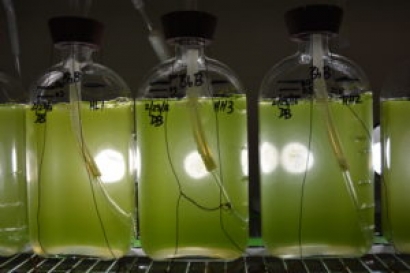
The biodiesel segment held the highest revenue share in the biofuels market. This was mainly due to the large fleet of diesel-powered vehicles and rising focus on decreasing fuel emissions. A joint study conducted by the U.S. Department of Agriculture, and the U.S. Department of Energy determined that biodiesel reduces net carbon dioxide emissions in the atmosphere by 78.5% compared with petroleum diesel fuel.
Among raw materials, the algae segment dominated the market in 2016 and is projected to retain its dominance over the forecast period.
North America accounted for the largest revenue share in the biofuels market. The prime driver for biofuel production in North America is the implementation of Renewable Fuel Standards (RFS), under the Energy Policy Act of 2005 which promotes the use of biofuels.
Asia Pacific is projected to be fastest growing region in the market, witnessing a CAGR of 43.33% over the forecast period, mainly due to supportive government initiatives in major automotive hubs of India and China.
Leading players in the advanced biofuels market are strategically investing into local market through deeper understanding of local biofuel trends. For instance, in the U.S, DuPont and Genera Energy along with the University of Tennessee are working with local farmers to develop sustainable cellulosic ethanol from switch-grass and other plants.

